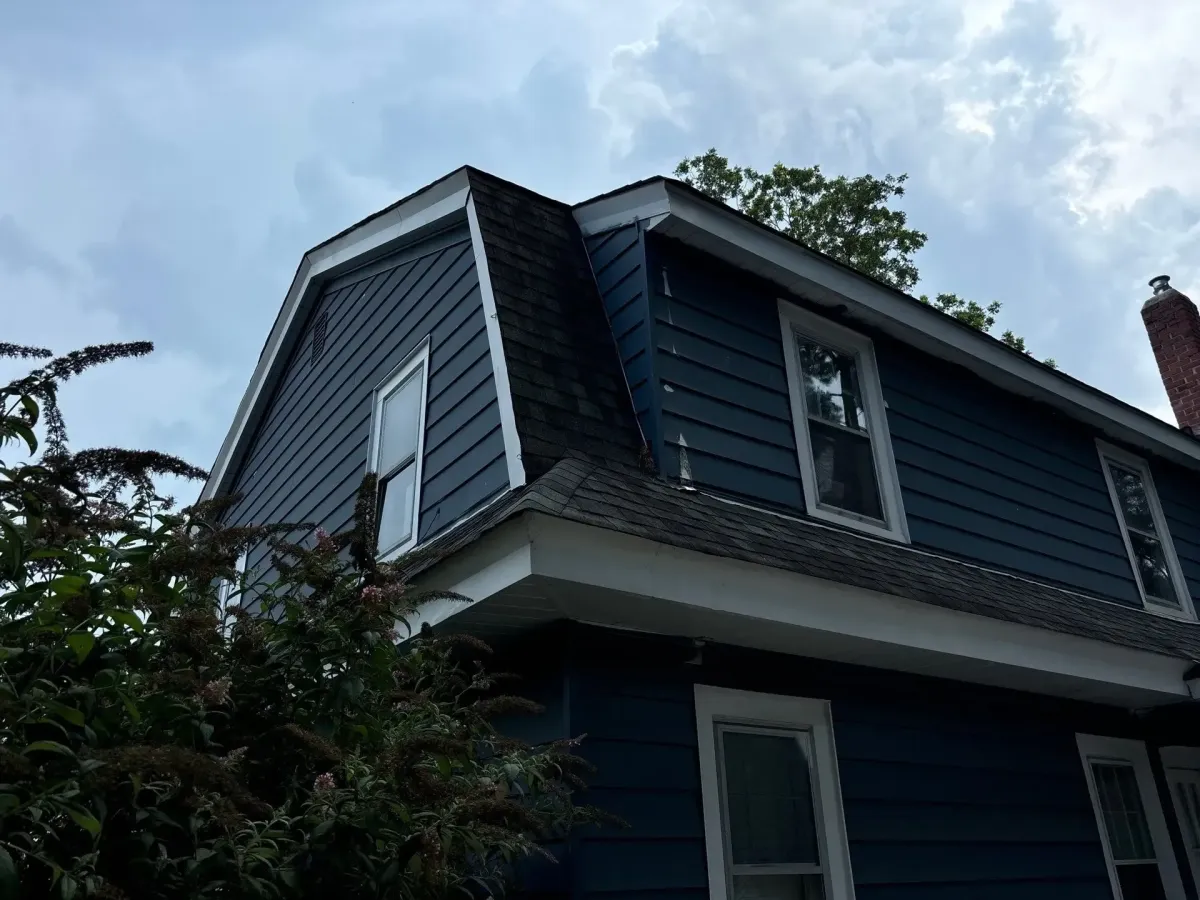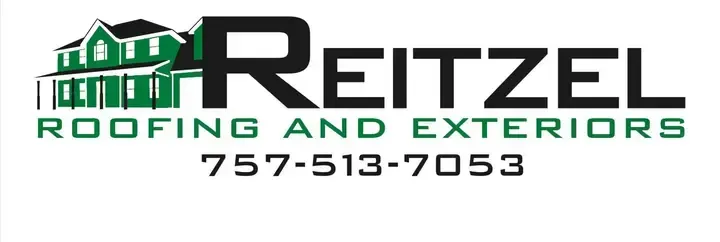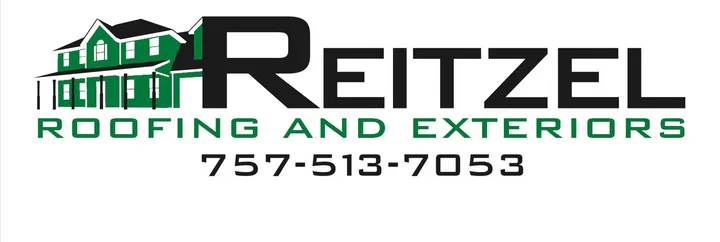LEARNING CENTER
CHECK OUT SOME OF OUR LATEST ARTICLES FROM IN OUR LEARNING CENTER

Window Condensation: Causes, Prevention, and Solutions
As a homeowner or prospective home buyer, you've likely encountered the frustrating issue of foggy windows or water droplets forming on your window panes. This common problem, known as window condensation, can be more than just an annoyance—it can lead to serious issues if left unchecked. At Reitzel Exteriors, we understand the importance of maintaining a comfortable and healthy home environment, which is why we've put together this comprehensive guide on window condensation prevention and solutions.
Window condensation occurs when warm, moist air comes into contact with a cooler surface, such as a window pane. While it may seem like a minor inconvenience, persistent condensation can lead to mold growth, wood rot, and even structural damage over time. That's why it's crucial for homeowners to understand the causes of window condensation and implement effective prevention strategies.
In this article, we'll delve deep into the world of window condensation, exploring its causes, effects, and most importantly, how to prevent it. We'll discuss various window condensation prevention techniques, from simple daily habits to more comprehensive home improvements. Whether you're dealing with existing condensation issues or looking to protect your new home from future problems, this guide will equip you with the knowledge and tools you need to keep your windows clear and your home healthy.
What is Window Condensation?
Window condensation is a natural phenomenon that occurs when water vapor in the air condenses into liquid form upon contact with a cooler surface. In the case of windows, this happens when warm, humid indoor air meets the colder glass surface of the window pane. The result is the formation of water droplets or a foggy appearance on the window.
There are two main types of window condensation:
1. Interior Condensation: This occurs on the inside surface of the window and is the most common type homeowners encounter. It's often a sign of high indoor humidity levels.
2. Exterior Condensation: This appears on the outside of the window and is typically less concerning. It usually occurs in humid climates or during certain weather conditions.
Understanding the type of condensation you're dealing with is crucial for effective window condensation prevention.
Common Causes of Window Condensation
To implement successful window condensation prevention strategies, it's essential to understand what causes this issue in the first place. Here are some common factors that contribute to window condensation:
1. High Indoor Humidity: Everyday activities like cooking, showering, and even breathing release moisture into the air. When indoor humidity levels are too high, condensation is more likely to occur.
2. Poor Ventilation: Inadequate air circulation can trap moisture inside your home, leading to increased condensation.
3. Temperature Differences: A significant difference between indoor and outdoor temperatures can cause condensation, especially during colder months.
4. Inefficient Windows: Old or poorly insulated windows are more prone to condensation due to their inability to maintain a consistent temperature across the glass surface.
5. New Construction or Remodeling: New homes or recently remodeled spaces may experience temporary increased condensation due to residual moisture in building materials.
6. Household Plants: While plants can improve air quality, they also release moisture into the air, potentially contributing to condensation issues.
7. Indoor Water Features: Aquariums, indoor fountains, or other water features can increase indoor humidity levels.
The Impact of Window Condensation on Your Home
While it might seem harmless at first, persistent window condensation can lead to several problems if left unaddressed:
1. Mold and Mildew Growth: Excess moisture creates an ideal environment for mold and mildew to thrive, potentially causing health issues for occupants.
2. Wood Rot: Prolonged exposure to moisture can cause wooden window frames and sills to rot, leading to costly repairs or replacements.
3. Paint and Wallpaper Damage: Excess moisture can cause paint to peel and wallpaper to bubble or separate from walls.
4. Reduced Energy Efficiency: Moisture on windows can increase heat loss, making your home less energy-efficient and potentially raising heating costs.
5. Structural Damage: In severe cases, unchecked condensation can lead to more significant structural issues within your home.
6. Decreased Indoor Air Quality: The presence of mold and mildew can negatively impact your home's air quality, potentially leading to respiratory issues.
Window Condensation Prevention Strategies
Now that we understand the causes and potential impacts of window condensation, let's explore effective prevention strategies:
1. Control Indoor Humidity:
- Use dehumidifiers in problem areas
- Run exhaust fans in bathrooms and kitchens when in use
- Ensure your clothes dryer vents outside
2. Improve Ventilation:
- Open windows periodically to allow fresh air circulation
- Use ceiling fans to promote air movement
- Consider installing a whole-house ventilation system
3. Maintain Consistent Indoor Temperatures:
- Use your HVAC system to maintain a steady indoor temperature
- Avoid drastic temperature changes, especially during colder months
4. Upgrade Your Windows:
- Install double or triple-pane windows with low-E coatings
- Choose windows with warm edge spacers and argon or krypton gas fills
5. Use Window Treatments Wisely:
- Open curtains and blinds during the day to allow sunlight to warm the glass
- Close them at night to provide an extra layer of insulation
6. Relocate Plants:
- Move plants away from windows to reduce localized humidity
7. Seal Air Leaks:
- Check for and seal any air leaks around windows and doors
8. Use Storm Windows:
- Install storm windows for an extra layer of protection against temperature differences
Solutions for Existing Window Condensation Issues
If you're already dealing with window condensation, here are some solutions to address the problem:
1. Wipe Down Windows: Regularly remove moisture from windows using a squeegee or absorbent cloth.
2. Use Moisture Absorbers: Place moisture-absorbing products near problem windows to help reduce humidity.
3. Apply Anti-Fog Solutions: Use commercial anti-fog sprays or solutions on your windows to reduce condensation.
4. Install Window Insulation Film: Apply a clear plastic film to your windows for added insulation during colder months.
5. Upgrade Window Weather stripping: Ensure your windows have proper weather stripping to prevent air leaks.
6. Consider Window Replacement: If condensation is persistent and severe, it may be time to invest in new, energy-efficient windows.
When to Call a Professional
While many window condensation prevention strategies can be implemented on your own, there are times when professional help is necessary:
1. Persistent Issues: If condensation persists despite your best efforts, a professional can help identify underlying causes.
2. Between-Pane Condensation: If you notice condensation between the panes of a double or triple-pane window, this indicates a seal failure and requires professional attention.
3. Structural Concerns: If you suspect condensation has led to structural damage, consult a professional immediately.
4. Window Replacement: When it's time to upgrade your windows, a professional can ensure proper installation and maximum energy efficiency.
Choosing the Right Windows to Prevent Condensation
When selecting new windows as part of your window condensation prevention strategy, consider the following factors:
1. U-Factor: Choose windows with a low U-factor for better insulation.
2. Solar Heat Gain Coefficient (SHGC): Select an appropriate SHGC based on your climate and home's orientation.
3. Frame Material: Opt for materials like vinyl or fiberglass that offer good insulation properties.
4. Glass Type: Consider low-E coatings and gas fills for improved energy efficiency.
5. Installation: Ensure proper installation by a qualified professional to prevent air leaks and maximize performance.
Maintaining Your Windows for Long-Term Condensation Prevention
Regular maintenance is key to long-term window condensation prevention:
1. Clean Windows Regularly: Keep windows clean to prevent dirt and debris from trapping moisture.
2. Inspect Seals and Weather stripping: Check for wear and tear annually and replace as needed.
3. Clear Drainage Channels: Ensure window tracks and weep holes are clear to allow proper drainage.
4. Monitor Indoor Humidity: Use a hygrometer to keep track of indoor humidity levels and adjust as necessary.
5. Service Your HVAC System: Regular HVAC maintenance can help control indoor humidity levels.
Conclusion
Window condensation prevention is an essential aspect of maintaining a healthy, comfortable, and energy-efficient home. By understanding the causes of condensation and implementing the strategies outlined in this guide, you can significantly reduce or eliminate window condensation issues in your home.
Remember, effective window condensation prevention often involves a multi-faceted approach, combining proper ventilation, humidity control, and the use of high-quality, energy-efficient windows. Whether you're a new homeowner or looking to improve your existing living space, these tips will help you maintain clear, condensation-free windows year-round.
At Reitzel Exteriors, we're committed to helping homeowners achieve optimal comfort and efficiency in their homes. If you're experiencing persistent window condensation issues or considering window upgrades as part of your condensation prevention strategy, don't hesitate to reach out to our team of experts. We're here to provide personalized solutions tailored to your specific needs, ensuring your home remains comfortable, energy-efficient, and free from moisture-related issues for years to come.

Our Services
Roof Repairs
Roof Leaks
Roof Storm Damage
Roof Replacement
Residential Roofing
Commercial Roofing
Siding
Trim
Windows
Fencing
Decks
Resources
Learning Center
Financing
Areas We Service
About Us
Contact Us
Privacy Policy
Copyright © 2022 Reitzel Roofing and Exteriors
All Rights Reserved
Our Services
Resources










